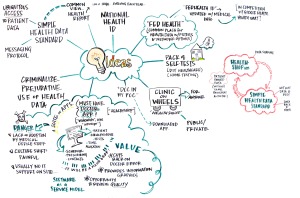Last night, in EC&I 831 we had a guest speaker, George Siemens who introduced us to the acromyn SWIM in open online courses. SWIM stands for sensemaking wayfinding information model. Sensemaking is a process of making connections, however it is more than connecting the dots, it is also about learning which dots are important to focus on and which dots are not important (considering dots as pieces of information). As previously discussed, I would like to develop an open community for patients with heart failure and their caregivers so that they may have the opportunity to share their knowledge and experience with each other. Health care professionals would also be part of the group and will be able to share their knowledge and experience with the patients and caregivers as well. Sensemaking and wayfinding is an important aspect to consider. I am looking at further advancing the Theory of Online Social Support by Sheryl Perreault LaCoursiere when I eventually write my comprehensive exams and develop a proposal for my research (still very much a work in progress).
The Theory of online social support was developed by LaCoursiere to describe the process of online social support through interpersonal relationships with other persons who are mostly unknown to each other. The theory includes the four concepts of nursing’s metaparadigm which consists of nursing, person, environment and health. Nursing comprises the thoughts and behaviors of the nurse who engages in online social support activities. The person is represented by the individual or groups of individuals, who seek online social support and engage in health-seeking behavior. The environment is virtual as it includes cyberspace and online environments. Health is viewed as a dynamic process that fluctuates over time and may include both chronic or acute health conditions that may affect the health status or health perception of the individual.
The two focal concepts of the online social support theory include online social support and linking. Online social support is defined as the “cognitive, perceptual, and transactional process of initiating, participating in, and developing electronic interactions to seek beneficial outcomes in health care status, perceived health, or psychosocial processing ability”(p. 66) and is represented as a trajectory that considers health status in relation to support needs.
Linking is the second focal concept and is defined as the “conscious and/or unconscious process of relating and weaving emerging awareness to previously learned thoughts or information” (p 67). It is described as a process similar to navigating a web page. Information and thoughts are sorted and retrieved as needed when situations occur over time. The individual builds a collection of information which provides support through transactions with other individuals in the online group and by the nature of the information itself.
I believe that by exploring coherence, it will help to further advance this theory







